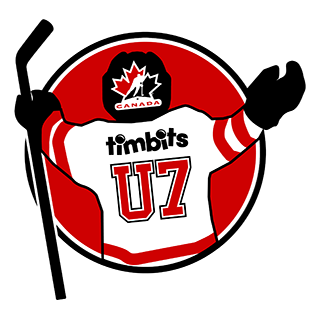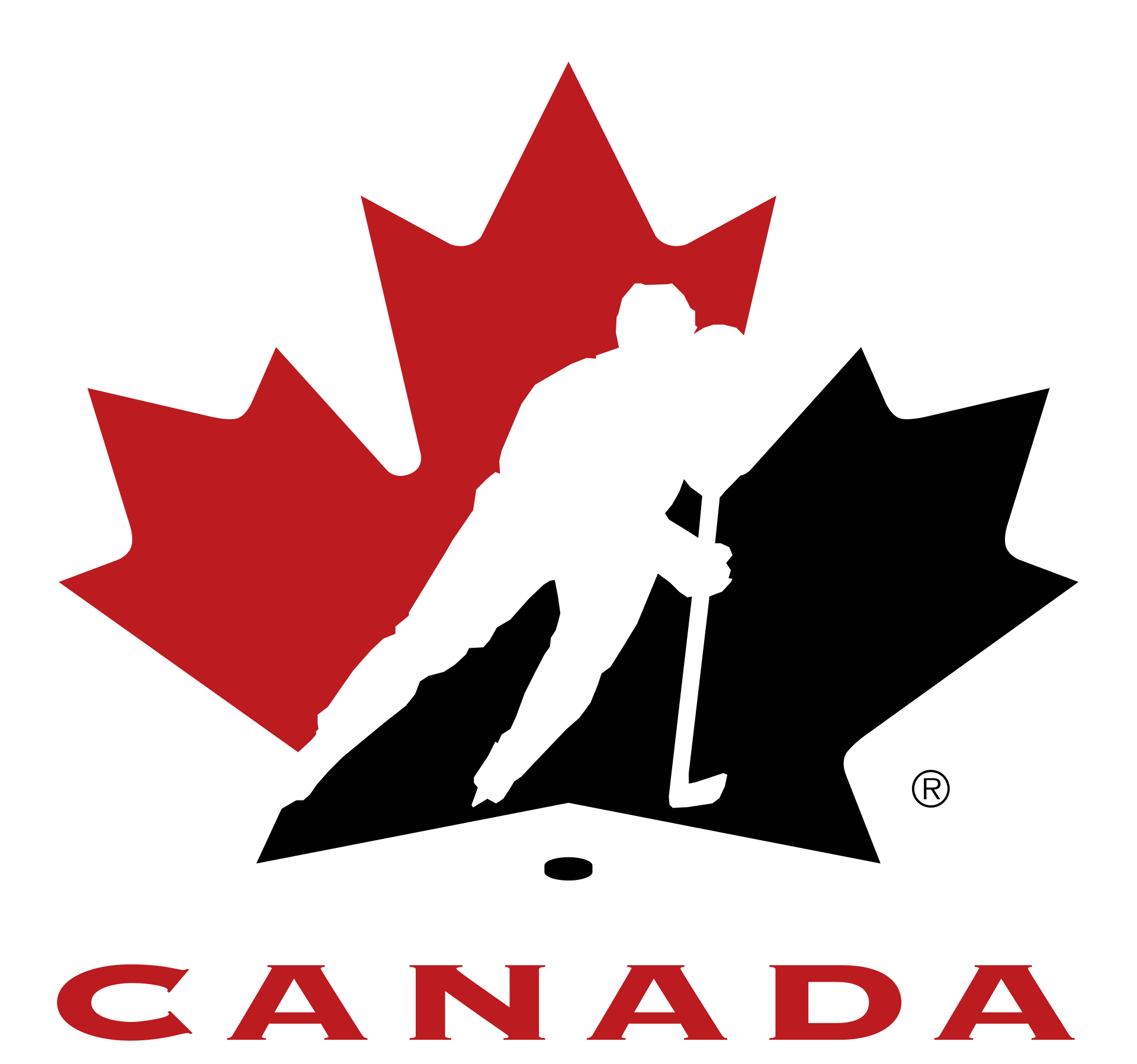Answering questions about Timbits U7 hockey
Learn more about the youngest age division, and its focus on age-appropriate programming
The Timbits U7 program gives young players the best on-ice experience, which leads to more skills, more ice time and more fun! It is clear that cross-ice hockey for five- and six-year-old players helps develop the finer points of hockey, and will benefit them in the long term.
Q: What are the core requirements of the Timbits U7 Game Play Model?
The model was designed to maximize the opportunity to get all players into the game. The core elements are running time, continuous play on shift changes, no offside, icing or face-offs after goals, and penalties are called
Q: How will player development be affected if there is no offside or icing called during game play?
Learning offside and icing will come in time, but the primary focus on age-appropriate training and programming needs to be on skill development in skating, puck control, passing, receiving and shooting. Concepts like offside, icing, positional play and face-offs can be introduced at a later age when players move to the full-ice model in the transition to U11 hockey
Q: Are teams permitted to identify a full-time goaltender?
Timbits U7 hockey has no full-time goaltenders. All players have an opportunity to defend the goal without the requirement of goalie equipment. Players should rotate through the position throughout the season. The Hockey Canada Long-Term Player Development Model encourages a wide range of skill development at a young age, and focusing on a single position may limit the opportunity to practice skills in all areas.
Q: Are cross-ice games required to be two 25-minute halves?
This is only a recommended timeframe. The game time established for the Timbits U7 Game Play Model is based on a 60-minute ice session, which can be shorter or longer. If this is the case, adjust the ice session accordingly, ensuring there is time for a short warm-up, two halves of play and a short break between the two halves to make any adjustments that need to take place.
Q: Is the length of a shift limited to 60 seconds?
The shift length of 60 seconds is a recommendation. Shifts may be up to a maximum of two minutes. This is at the discretion of the Member. It is important to reference the core requirements of the game to ensure the spirit of the game is maintained.
Q: Are Timbits U7 teams permitted to play full-ice games?
No. The focus is on a size-appropriate ice surface, and for five- and six-year-old players that is cross-ice.
Q: What is the difference between a jamboree and a tournament?
A jamboree is designed to engage players in a fun environment; players come together and are placed onto teams. Games may or may not be competitive and the emphasis is on fun and fair play. A tournament is as a schedule of games played among three or more teams, which follows set schedule and leads to a winner.
Q: Are smaller nets required?
There is no requirement to use smaller nets for Timbits U7 games. Regular nets (4x6) are acceptable, however, smaller nets (2x3, 3x4) are more suitable for this age group.
Q: Is there a need to draw the crease for the nets?
No. Each net should be placed just inside the face-off circle, which will provide a small marking to aid the goaltender in positioning themselves. If there is no circle, a crease may be drawn on the ice.
Q: What are the advantages of practicing in small areas and playing cross-ice games?
Small spaces mean more engagement in the play and more activity. Through small-area, station-based practices and cross-ice games, players are closer to the play at all times and have more opportunity for puck touches. Regardless of the skill level or the ability of each player, opportunities to be engaged in the play are doubled when the playing area is smaller. NHL research has illustrated that all skill areas of the game increased substantially when players played in small spaces more suited to their age and skill level.
Q: What are the dimensions of a cross-ice hockey game?
The average dimensions of a regular ice surface in Canada are 200 feet by 85 feet, with some 200 feet by 100 feet. The cross-ice surface can be a maximum of 100 feet by 60 feet if the dividers are placed at the blue-line.
Q: Is it a requirement to use a blue puck instead of a black puck, and what are the advantages?
No. The regulation black puck weighs six ounces, while the blue puck weighs four ounces. Scaling down all aspects of practice and game play for Timbits U7 players is very beneficial. The blue puck is an appropriate weight in relation to the height and weight of young players. Use of the blue puck can promote proper mechanics in shooting, passing and carrying the puck.
Q: Should Timbits U7 hockey be tiered?
Grouping of players of similar ability can set young players up for success and enjoyment. The focus of the Timbits U7 Game Play Model is player development. It is important in both station-based practices and in cross-ice game play that players be grouped by similar ability levels whenever possible. It is recommended that prior to the start of cross-ice games, coaches may wish to discuss possible line combinations to ensure the skill level of the players on the ice is similar; this will allow more puck touches and fun for all players.
Q: Do the officials need to be fully registered?
This is at the discretion of the Member, if it chooses to use officials and the one-official system. If the Member chooses not to use officials for Timbits U7 hockey, then properly registered volunteers can oversee game play.
Q: If you choose to use registered officials, do the officials have to wear the full officiating uniform?
If the Member elects to have officials work the games, all officials need to wear the minimum of an officiating jersey with Member crest, black pants and a black CSA-approved helmet with a CSA-approved half visor.
Q: If you choose to use registered officials, do the on-ice officiating shadows/mentors have to wear an officiating uniform?
No. In situations where an on-ice shadow/mentor is supporting the official, it is appropriate for them to wear a Member tracksuit. They still must wear a black CSA-approved helmet with CSA-approved half visor.
Q: How does the official or coach keep game flow and not lose time on shifts when a puck goes out of play?
Officials are encouraged to keep additional pucks in their pocket in the event a puck is shot out of play. The official will simply provide a new puck to the non-offending team and play will resume.
Q: What support is available for coaches?
The NCCP Coach 1 – Intro to Coach clinic is designed for Timbits U7 coaches who need to understand the proper instructional approach with under-7 players. The Community Coach Stream clinic is part of the new online NCCP Coaching Clinic available through the online Hockey University.
Recognizing the need to provide a positive experience for young hockey players, the Coach 1 clinic builds upon a number of values, which include:
- Providing a safe environment for the introduction of fundamental skills.
- Developing an understanding of basic teamwork through structured activities and game-like situations.
- Introducing participants to fair and cooperative play.
- Refining basic motor patterns and building self-confidence.
- Providing an environment that challenges individuals positively and rewards the participants.
- Providing opportunities to build a lifestyle of fitness and activity.
In addition to coach education, the Hockey Canada Skills Manuals are a set of ice-session plans that are designed for the age-appropriate and skill-specific needs of Timbits U7 players. These plans are available through the Hockey Canada Network, Drill Hub and at HockeyCanada.ca.
Q: What guidelines should be followed when storing and setting up equipment at community arenas?
Each facility in Canada is unique and will have its own standard operating procedures when it comes to the storage, set-up and take-down of the portable board system or foam divider system. In many cases, municipalities have developed procedures to apply to all arenas within their jurisdiction.
It will be important to work with facility management to ensure proper protocols are being followed. This will maximize efficiency, ensure safe practices for all and promote a harmonious relationship between the arena staff and members of the local hockey association.
Q: Where can portable boards or foam barriers be purchased?
There are a number of suppliers for portable boards, foam barriers and small nets. It is advisable to check local sources to ensure best pricing on the shipping of products.
On a national level, two suppliers handle large-volume orders for these products.
OmniSport Inc.
14 Boulder Blvd.
Stony Plain, AB
T7Z IV7
Telephone: 780-968-2344
omnisport.ca
Athletica Sport Systems Inc.
554 Parkside Drive
Waterloo, ON
N2L 5Z4
Telephone: 519-747-1856
Toll-free: 877-778-5911
athletica.com



 HOCKEY CANADA
HOCKEY CANADA

